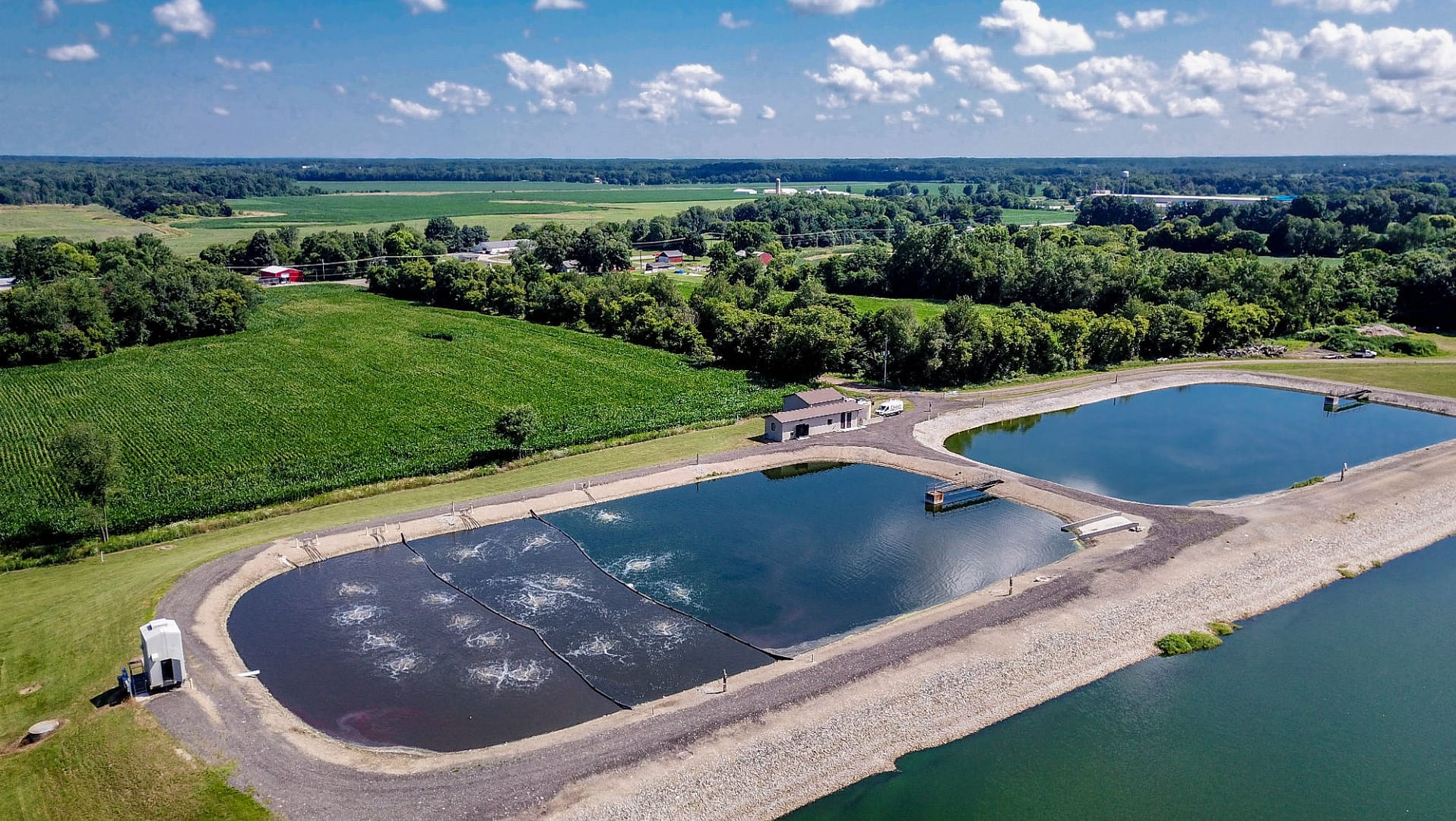To ensure wastewater treatment objectives are met, a lagoon aeration system design must be customized for its specific application.
In this video, Patrick Hill outlines the facility details we use to calculate aeration requirements and customize a lagoon aeration system design. He’ll also review common pitfalls and often-overlooked factors that can result in insufficient treatment. Watch the video on our Triplepoint You Tube channel and read below for highlights.
The definition of aeration
According to an EPA wastewater technology fact sheet, the purpose of wastewater aeration is twofold: to supply the required oxygen to the metabolizing microorganisms; and to provide mixing so that the microorganisms come into contact with the dissolved and suspended organic matter.
By definition, mixing is a critical component of wastewater lagoon aeration. You can design an extremely efficient aeration system, but if it fails to adequately mix and keep the food, the bugs, and the oxygen in constant contact, treatment will suffer.
Facility details

Dimensions: It’s important to have accurate facility information, namely the dimensions of the lagoon, its depth, and the sidewall slope pitch. This allows us to calculate the volume of the lagoon. The lagoon’s volume plus flow rate tells us the hydraulic retention time. Depth is especially critical: The deeper the lagoon, the better the oxygen transfer because the bubble has more time to transfer oxygen to the water as it rises.
Influent data: What is the organic loading of BOD, TSS, and nutrients like ammonia, nitrogen, and phosphorus?
Mixing: While robust mixing improves capacity, more mixing demands more power. When Triplepoint designs an aeration system, we’ll often run partial, vigorous, and complete mix scenarios. This data helps the lagoon aeration system designer determine the best strategy to meet the facility’s treatment objectives at the lowest possible cost.
Calculating oxygen requirements
Our baseline calculation to determine the amount of oxygen required by a particular lagoon is 1.5 lbs of oxygen for every pound of influent BOD plus 2/mg L of residual DO. As lagoon expert Steve Harris states in his manual, Wastewater Lagoon Troubleshooting: An Operators Guide, most lagoon problems can be avoided if DO levels are kept above 2.0 mg/L.
Common pitfalls

1. Not accounting for sludge: Some portion of lagoon sludge is volatile solids. This undigested BOD has an oxygen demand. In addition, sludge displaces volume, reducing capacity and retention time. Check out our blog, How to Perform a Lagoon Sludge Survey, for more on methods of calculating sludge accumulation.
2. Missing influent BOD data: This information is sometimes hard to come by because most states don’t require influent BOD reporting. The lack of accurate BOD data makes it more difficult to calculate actual aeration requirements.
3. Unknown conditions: Surprises and upsets are more common with industrial wastewater, but they can happen in municipal facilities, too. A surge of dairy wastewater, septage, or even meth lab chemicals poured down the drain can upset a lagoon or kill the bugs completely.
4. Insufficient mixing: As Patrick states in the video, you can pump a tanker truck of oxygen right into the middle of the lagoon and theoretically have enough pounds of oxygen for the bacteria to break down the waste, but unless there’s mixing to get the food, the bug, and the oxygen together, it’s irrelevant.
About Ares Aeration®
Triplepoint’s Ares Lagoon Aerator combines the efficiency of fine bubble aeration with robust coarse bubble mixing in a single portable unit. Download the brochure.

